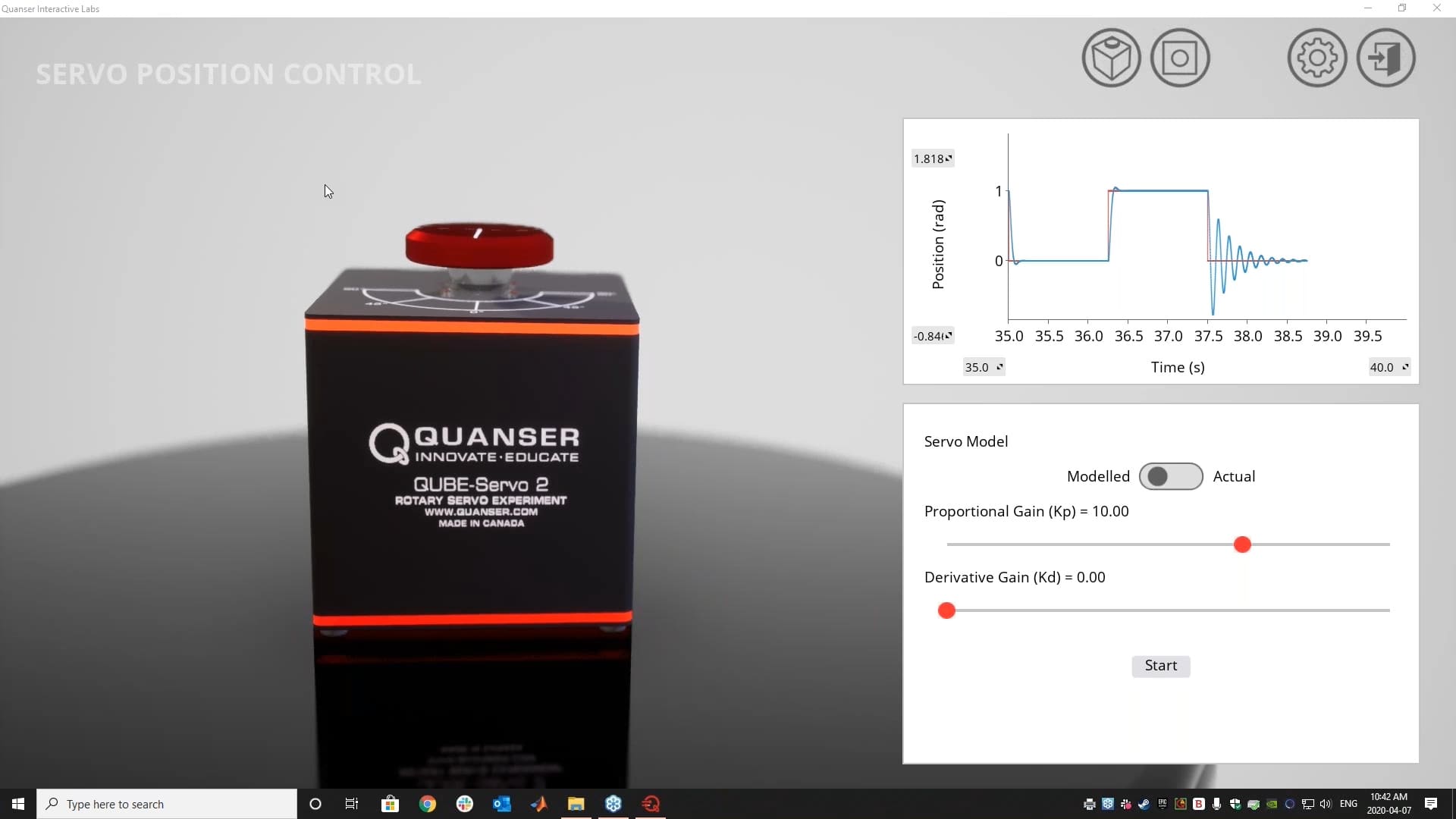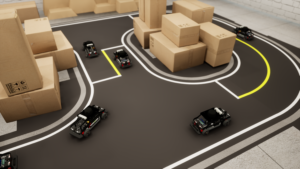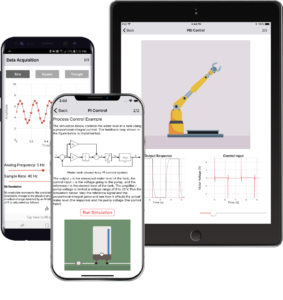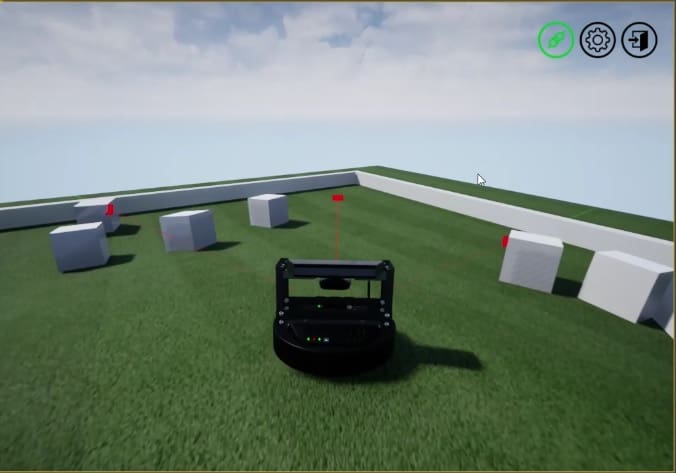
At Quanser, we have always believed that a hands-on approach using hardware is the best way to complement any undergraduate course and graduate research. But we are living in unprecedented times. As we are practicing social distancing and are not able to physically come together, academic institutions are scrambling to find a way to continue teaching. While serving lectures at a distance can be quite challenging, it’s even more so for labs. For many engineering departments, hands-on teaching with real hardware is almost impossible.
Bringing 30 years of experience to the table
Quanser has been creating hands-on experiences in control systems, mechatronics, and robotics for over 30 years to give students the insights and skills they need for their future careers, whether in academia or industry. What some of you might not know is that we also have quite a bit of software pedigree and software assets that we can bring to the table. We’ve worked with a lot of partners over the years to integrate advanced software technologies into what they do in their teaching courses, from mobile learning to 3D simulations in order to illustrate applications like robotic manipulators or self-driving cars.
When our hardware and software experience comes together, we are able to create solutions that meet the needs of educators now and in the future as seamlessly as possible. And that’s really where Quanser Interactive Labs was born, aiming to help you provide those hands-on, interactive, and livened experiences from a distance.
Pulling available technology together to provide virtual labs fast
When the current crisis started, we quickly realized that there was going to be a disruption in how we would typically deliver our products to instructors. To address this new challenge we began by looking at the assets that we had as a company. Over the years, we developed several technologies to address cutting-edge academic trends and bring cutting-edge teaching techniques to our customers and our partners. We tried to think about how we could use these approaches to offer our solutions in a distance learning context.
 Virtual reality technology
Virtual reality technology
The first thing we looked at was our virtual reality technology platform. Over the years this technology has allowed us to represent our hardware in virtual and mixed reality spaces. This has brought a lot of flexibility to our hardware by allowing us to represent our systems in a range of environments and illustrate applications for the core skills offered by our platforms more effectively.
Mobile content delivery
The other piece of technology that we’ve worked on for the last several years is our mobile content platform, qdex. qdex is able to bring traditional engineering content to mobile devices in an effective, interactive, and engaging way. With qdex, you can present advanced and theoretically deep content to students in a way that really allows them to understand and engage with the material. Students can play and interact with concepts in ways that they had never considered, and get a much better understanding of how various techniques apply to engineering and the real-world context of industrial applications.
Interactive textbook app
 We knew mobile would be important from our experience building Experience Controls. This interactive textbook app took the content of a traditional controls course textbook and ported it to a mobile platform to really enliven and enrich it, making the content more engaging for students. Using high-fidelity simulations and real-world applications, we gave students the ability to see how the theoretical concepts come alive. It had been hugely successful for us, with over 4,000 student downloads and over 400 instructors accessing the course resources.
We knew mobile would be important from our experience building Experience Controls. This interactive textbook app took the content of a traditional controls course textbook and ported it to a mobile platform to really enliven and enrich it, making the content more engaging for students. Using high-fidelity simulations and real-world applications, we gave students the ability to see how the theoretical concepts come alive. It had been hugely successful for us, with over 4,000 student downloads and over 400 instructors accessing the course resources.
Those technologies and experiences formed the foundation for Quanser Interactive Labs. Leveraging our abilities and assets, we knew we could create something to not just address the current need but to serve as a platform to deliver interactive, engaging, and robust virtual experiences to students outside of the traditional brick-and-mortar lab.
Quanser Interactive Labs
Quanser Interactive Labs offer interactive experiences for lectures and for labs. They are based on a virtual representation of our hardware platforms such as QUBE-Servo 2 and Quanser AERO that behave the same way an actual physical system would. That gives students hardware experiences without actually being in front of a piece of hardware. The virtual hardware is accompanied by a curriculum component to fully mimic the experience students and instructors would get working with a real Quanser system.
Available immediately, on all platforms – no IT needed
Given the current need, we wanted the Quanser Interactive Labs to be available immediately, and accessible across any platform – whether it’s Windows, iOS, Android, or macOS. With limited or no access to campuses, it was important that the platform not to require any kind of infrastructure or onsite integration. As a result, Quanser Interactive Labs is now available to all of your students, no matter how many students you have. They can download and use the labs today and continue learning, the same way they would have in a traditional undergraduate lab.
Interactive labs for your lecture and beyond
While labs are first and foremost what we do, what we are seeing more and more are hardware interactions being brought to the lecture space. Being able to show students in a lecture what exactly you’re talking about, what the theoretical implications are, is a really effective way to show them the real context and application of how these theories come together.
We encourage instructors to integrate the Quanser Interactive Labs into online lectures, or even more advanced online activities, like online studios or other project-based learning applications. This platform makes it possible to deliver opportunities for students to not just interact with online content or online lectures, but actually have cutting-edge pedagogical experiences at a distance.
In the future, Quanser Interactive Labs could actually end up being a mechanism to allow your students to interact with content and systems on-campus in a much more engaging and effective way than they might even have in a traditional context.
Engineering labs of the future
We intimately understand that there’s nothing like a hardware experience, nothing like sitting in front of a piece of machinery and working with it to understand what it’s doing and how the software, the theories, the applications, and the hardware all come together. We hope the Quanser Interactive Labs will help all institutions that need to transition their engineering labs online and in the future, will become a valuable tool to address the needs of our academic community.
A free trial of the Quanser Interactive Labs is available until June 30, 2020.




